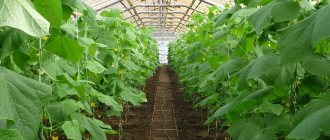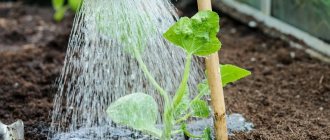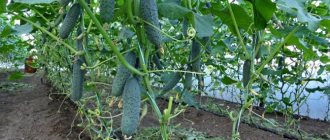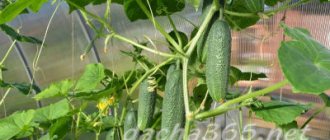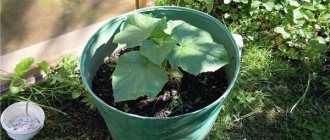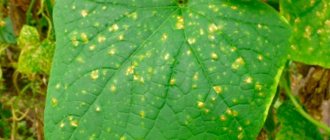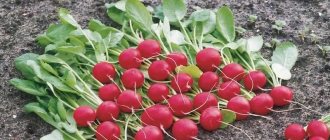Advantages of greenhouse vegetable growing
Cucumbers are undoubtedly one of the most common and favorite vegetables among gardeners. Along with growing this crop in open ground, the use of greenhouses is becoming increasingly common. And this is not surprising. Compliance with correct agricultural technology is a big plus for the greenhouse option of growing cucumbers in front of open ground.
Advantages of greenhouse cultivation:
- the yield from the same area is several times higher;
- possibility of getting an early harvest;
- extension of the growth of this vegetable in the middle zone until the beginning of October;
- the use of cucumber varieties zoned for the southern regions.
Using the right varieties of cucumbers and the technology of cultivating them in a greenhouse, and special technical means to maintain optimal temperature and humidity, it is possible to grow this vegetable all year round in the middle zone.
If desired, by growing cucumbers in a greenhouse, gardeners can obtain the harvest for personal consumption and start a fairly profitable home business.
The only disadvantages can be considered the financial costs of manufacturing or purchasing the greenhouse itself and investing a lot of physical effort.
You can grow cucumbers in a heated greenhouse all year round
Features of the microclimate
Microclimate plays a huge role in plant development
In a closed greenhouse, when planting cucumbers and in the process of further caring for them, an optimal microclimate must be established.
Temperature indicators
The temperature in the greenhouse when growing cucumbers should be stable, without sharp fluctuations, within 25' - 28'. For grown and strengthened cucumber bushes, it is permissible to lower it to 18' and increase to 30'.
Lighting
Of no small importance indoors is lighting, which is maintained at the required level in autumn and winter through the use of additional sources of artificial light.
Humidity
As the temperature in the greenhouse increases, it is necessary to increase the humidity level, which on a hot day should be at least 85%. It is possible to increase the amount of moisture in a greenhouse by watering the paths and then creating a greenhouse effect with the doors to the greenhouse closed for an hour.
Air circulation
Ventilating a closed greenhouse space provides access to air that does not pass through artificial polycarbonate well. During the warm season, it is recommended to keep the windows of polycarbonate greenhouses open, but do this on one side of the structure so as not to create drafts.
Greenhouse preparation
Before planting cucumber seedlings or seeds, it is necessary to carry out work to prepare the greenhouse itself. They can be divided into autumn and spring periods.
In autumn after harvest
In the fall, when the cucumber harvest is harvested, the frame is inspected and repaired, and damaged areas of the covering are replaced. The condition of the film or glazed coating is monitored throughout the winter season. Wooden parts are treated with a three percent solution of copper sulfate (70 g per 10 liters of water). The metal parts of the frame are painted. The glasses are sprayed with formaldehyde (2 g per 1 liter of water) at a rate of 1 liter per m2. If operation is envisaged in winter, electric lighting fixtures and technical means for heating are checked and adjusted.
Garbage and remains of old plants are removed from the ground, and the top layer (4–6 cm) of soil is changed, because this is where pests and sources of disease accumulate. Then the ground is disinfected with a solution of copper sulfate at the rate of 1 tbsp. l. for 10 liters of water. Treatment consumption is 10 liters per 20–25 m2 of greenhouse area. You can also use a mixture of potassium permanganate and lime to disinfect the soil: 6 g of potassium permanganate per 15 liters of water and 20 g of lime per 6 liters of water. If it is impossible to prepare the greenhouse in the fall, disinfection is carried out in the spring - dissolve 1 Intra-Vir tablet and 2 Oxychoma tablets in 10 liters of water. This amount is enough for 15–20 m2.
Organic and mineral fertilizers are applied: 20–25 kg of fresh manure, 30–40 g of phosphorus and potassium fertilizers per square meter. m. In case of increased acidity of the soil, add 200–500 g of lime per 1 m2. Then the earth is dug up to a depth of 30–35 cm.
In the spring before planting
In the spring, when the ground has warmed up sufficiently, an additional layer of film is stretched over the film greenhouse to avoid damage to the cucumber plantings by low night temperatures.
Form beds with a width of at least 1 m and a height of 25–30 cm, leaving a space of 60–70 cm for a passage between them. If the greenhouse is not heated, before sowing seeds, fresh manure is laid out on the beds, and a layer of fertile loose soil of about 25 cm is placed on it. After All this ridges are watered abundantly and seeds are sown. Instead of manure, you can pour ready-made compost (sawdust, decomposed peat, rotted straw and grass, etc.) onto the beds. Then the seeds are not sown, but ready-made seedlings are planted. If the formation of high ridges is not envisaged, and the plants will be grown directly in the soil, then in this case add simple - 80 g or double - 40 g of superphosphate per square meter. m.
A prerequisite is the presence of a horizontal trellis made of rigid wire, located at a height of 2 meters above the beds, to which the cucumber vines are tied. This prevents the bushes from overheating and the development of fungal diseases.
Raised beds retain heat well in the soil
Timing of planting work
Seedlings intended for planting in a greenhouse must be healthy, compact, with 4-5 large leaves and a developed root system. The optimal age is 25-30 days; with longer cultivation at home, seedlings often outgrow and take root less well.
Sowing of seedlings is carried out 3-4 weeks before the planned planting in a greenhouse or open ground
You can read about the pre-sowing preparation of pumpkin seeds, the process of growing seedlings and caring for them in the articles on our website.
The timing of planting seedlings is determined depending on the type of greenhouse structure and its technical equipment:
| Type of greenhouse structure | Deadlines |
| Spring (unheated) – film, glass, polycarbonate | Mid-April, when the average daily air temperature rises above 10 degrees Celsius |
| Winter (with constant heating and additional lighting) | January-February / mid-March |
Time frames often vary depending on the climatic conditions of the growing region, current weather conditions and plant varietal characteristics. Some gardeners plan sowing work, also taking into account astrological forecasts of the “lunar” calendars. The most favorable days in May and June 2022 can be selected in calendar tables.
Greenhouse conditions make it possible to plant seedlings and sow cucumber seeds earlier than in open ground
The optimal temperature and humidity conditions for growing cucumbers in a greenhouse are:
| Period | Air temperature, ℃ | Air/soil humidity, % | |
| During the day (in sunny / cloudy weather) | At night | ||
| Seed germination | 30-32 / 30-32 | 28-30 | 70 / 70-80 |
| Growing seedlings | 22-24 / 20-22 | 16-18 | 70 / 70-80 |
| From germination to the beginning of fruiting | 22-24 / 20-22 | 17-18 | 85-95 / 70-80 |
| Fruiting | 26-28 / 22-24 | 18-20 | 85-95 / 90-95 |
Plants are very demanding of heat and moisture. Amateur vegetable growers do not always have the opportunity to equip greenhouses with electric heating. To improve the conditions for the growth of seedling roots, experts suggest using biological “fuel” - well-heated manure, preferably horse manure. It is mixed with straw or other plant components, watered with hot water and laid out in ditches 50 cm wide and 30 cm deep, prepared in places where rows of plants are placed. Sprinkle the top with a layer of soil (15-20 cm). In buildings with such “heating”, seedlings can be planted a month earlier than in greenhouses with natural solar heating.
At temperatures below 18 degrees Celsius, the development of seedlings stops and the sown seeds die
The root system of cucumbers is superficial and rather weak, so in order to get a good harvest you need to take care of soil fertility. In the fall, it is recommended to add 15-20 kg of humus or compost, 50-70 g of superphosphate, 30-40 g of potassium sulfate per square meter, and in the spring, fill future cucumber beds with nitrogen fertilizers (40 g of urea or ammonium nitrate) and dig. The soil reaction should be slightly acidic or neutral. Excessive acidity is leveled with the help of ash, chalk, lime or dolomite flour.
All representatives of the “pumpkin” are demanding in terms of irrigation and nutritional conditions, and bear fruit well in soils enriched with organic matter and wood ash
Planting cucumbers in a greenhouse
Cucumbers are planted in a greenhouse by seedlings or by sowing seeds directly into the beds. The timing of planting and the technology of soil preparation in the greenhouse depend on the chosen method. The planting time is significantly affected by the greenhouse covering material: film, glass or polycarbonate coating. You also need to consider methods of heating the greenhouse - with biofuel or a convector. In the latter case, cucumbers can be grown throughout the year.
General rules
When planting cucumbers in a greenhouse, you should be guided by the following:
- When planting, seeds must first be checked for quality and germinated;
- The seedling method is preferable to planting seeds in the ground. An exception is a polycarbonate greenhouse;
- seedlings must be 25 days old and have 3–4 true leaves;
- per 1 sq. m. no more than four plants are planted;
- the planted seedlings are formed vertically, tying them to a trellis;
- the earthen ball of the seedling should be 1–2 cm higher than the level of the bed;
- For better pollination, cucumbers of different varieties are planted nearby.
When to plant
As soon as the seedlings have produced 3-4 leaves, they are transferred to the greenhouse. It is better to do this in May. It is not dangerous to place seedlings in a polycarbonate greenhouse even in the first days of the month. It is important that the day is warm (about +25°C) and sunny. If it is cool outside, the greenhouse will have to be heated artificially.
With the onset of warm weather, the seedlings are transferred to the greenhouse.
Features of planting and caring for cucumbers in polycarbonate greenhouses: how to grow a rich harvest
Using greenhouses made of cellular polycarbonate, you can start growing cucumbers as early as March. The heat loss in them is less than in film greenhouses and it is easier to create additional heating. The advantage is that in polycarbonate greenhouses, seeds can be sown directly on beds with biofuel - this reduces the cost of preparing seedlings. And the plants themselves will be spared from temperature adaptation - during the growth process they get used to low temperatures. Using seeds of early varieties, planting seeds in the ground begins in early March. After 21 days, the sprouted sprouts are picked and planted in a permanent place of growth.
Cucumber varieties for polycarbonate greenhouses
Among cucumber varieties, it is better to give preference to those created specifically for growing in greenhouse conditions. Ideally, seeds should:
- suit the season;
- be self-pollinating varieties or not requiring pollination;
- tolerate heat well;
- have immunity to diseases common in this environment.
Seeds of Siberian selection are well suited for winter greenhouses.
If you bought bee-pollinated seeds, place sweet baits near the windows and doors of the greenhouse during the flowering period.
When choosing other qualities, you just have to focus on your preferences. Both early-ripening and late-ripening varieties with fruits of any length are suitable for growing in polycarbonate structures. It is worth paying attention to:
- F1 German - cucumbers are medium in size, do not become bitter even with scanty watering, appear 35-40 days after germination. The yield is excellent, not very picky in terms of soil selection, does not require pollination, and is resistant to powdery mildew, cucumber mosaic and cladosporiosis;
- F1 Aristocrat is also an early ripening parthenocarpic type. The fruits are small and tasty fresh or canned. The plant withstands changes in environmental conditions and does not suffer from powdery mildew;
- F1 Courage - ripens early, does not require pollination, will produce a good harvest even in not very favorable conditions. On average, cucumbers stretch 10 centimeters; the vegetable is delicious to eat raw and as pickles.
Choose the same variety for the greenhouse and open ground. In the first, the fruits will appear faster, on the street a little later - so the cucumber season in your garden will last for a couple of months.
Watering
Cucumbers are a very moisture-loving crop. It is necessary to properly organize the process of watering plants in a greenhouse. When watering, it is important not to overdo it - excessive watering leads to diseases (rotting) of plants.
After planting the plants, before flowering begins, water the cucumbers moderately - per 1 square meter. m pour 4–5 liters of water. This watering rate will prevent the growth of leaf mass of plants and promote the active formation of ovaries.
During the formation of ovaries, during all active fruiting and after harvesting, cucumbers require the most watering. Therefore, from the beginning of flowering until the end of the growing season, the watering rate is increased to 9–12 liters per 1 m2.
The frequency of watering depends on the ambient temperature. In hot weather, water daily; in moderate heat or on cloudy days, 1-2 waterings per week are sufficient. During abundant fruiting, water every other day.
When watering, you should be guided by the following rules:
- it is necessary to control the condition of the soil under the bushes: it should be moderately moist, but not waterlogged;
- when the leaves wither, the plants must be watered immediately;
- at the beginning of fruiting, you can dry the soil in order to accelerate the development of ovaries;
- Changes in soil moisture levels should not be allowed;
- Water should be watered at a temperature not lower than 18–20°C;
- The most favorable time for watering is in the evening, after sunset;
- After watering, be sure to loosen the soil.
Advantages of drip irrigation in greenhouses
Various equipment is used for watering: watering cans, buckets, hoses, etc. There are also automatic watering systems:
- sprinkling;
- aerosol auto-irrigation;
- drip irrigation system.
The drip irrigation system is the most convenient and efficient for irrigating cucumbers in a greenhouse. Let's consider the advantages of this method:
- water flows directly under the root of each plant;
- automation of the process, which allows gardeners to visit their gardens and summer cottages less often;
- there is no danger of soil erosion;
- precise dosage of supply, and therefore saving water;
- simultaneously with watering, you can fertilize the plants;
- ease of maintenance;
- reduction of physical costs;
- ultimately - increased productivity.
The main disadvantage of drip irrigation is the high price of standard irrigation equipment offered by manufacturers. But gardeners have come up with many homemade devices for drip irrigation. And anyone who knows how to hold a tool in their hands can build such a system in their greenhouse.
Drip irrigation allows water to be delivered to each plant directly under the root
Nuances of the process from A to Z for beginners
Planting cucumbers in a greenhouse is a crucial moment, which begins with preparing the seedlings. First, it is grown at home. Then the soil preparation begins and a stable temperature regime is established. Then holes are dug for planting seedlings. It is important to maintain a distance between them so as not to thicken the planting.
Then an individual irrigation regime is set. Repeat irrigation every time after the soil dries out a little. Plants are fertilized in a timely manner, and the soil is loosened and freed from weeds.
Important! Only specially developed varieties for closed ground are planted in the greenhouse.
Top dressing
During the entire growing season, cucumbers need to be fed. Different types and rates of organic and mineral fertilizers are used in different growing cycles. During the season, plants are fed at least four times.
Table: feeding cucumbers during the season
| Fertilizer application time | Types and rates of applied fertilizers |
| After planting the seedlings. | In infused mullein (1 glass per 10 liters of water) dissolve 10–15 g of superphosphate and potassium sulfate. |
| Before flowering. | Same |
| At the beginning of fruiting. | Nitrophoska solution (10–15 grams per 10 liters of water). |
| During mass fruiting. | A solution of 0.5 liters of mullein and 1 tsp. potassium sulfate per 10 liters of water. |
The fertilizer rates indicated in the table are applied at the rate of 0.5 liters per plant.
Wood ash is a very valuable fertilizer for cucumbers. It is diluted in a ratio of 100 g per 10 liters of water and used at any time during plant cultivation with a break of 10 days.
Video: how to properly feed cucumbers
Formation of a cucumber bush
The formation of cucumbers is the most important agrotechnical technique when growing them. This helps to improve the quality of fruits, increase productivity, and it is much easier to care for the plants - there will be no continuous thickets in the greenhouse. In addition, plants are less susceptible to diseases and pests. The formation of bushes consists of the following activities:
- choosing the direction of bush growth;
- garters for trellises;
- plant trimmings.
Cucumber bushes in a greenhouse should be formed into one stem, since the fruits are set on the central stem. To achieve this, the following work is carried out:
- 3–5 days after planting the seedlings, the plant is tied with a cord to a wire stretched horizontally;
- when the bush reaches 6 leaves, the top is plucked off;
- From below, remove all leaves and shoots up to the 5th leaf. This protects the plant from diseases and ventilates the soil well;
- pinching is carried out: one ovary is left in each axil and pinched after the third leaf;
- On the next shoot, 2 ovaries are left, and cut after 4 leaves;
- when the main shoot reaches the wire, it is also pinched.
Scheme of forming a cucumber bush into one stem
Important: to increase yield, it is necessary to systematically remove male flowers on the plant.
If these steps are performed correctly, the cucumber bush will bear fruit for a long time.
Growing seedlings
Growing seedlings for a greenhouse and for the ground is almost the same; the difference in activities begins later. Gardeners need to properly treat the container and soil substrate, harden and disinfect the seed material, and properly care for the sprouts.
Preparation of soil and containers
For planting seeds for seedlings, two types of soil are used:
- store;
- cooked by yourself.
There is less hassle with a universal store-bought product used for all vegetables, but a home-made substrate takes into account all the intricacies of growing cucumbers specifically.
Soil from the garden is absolutely not suitable for seedlings: it contains too many impurities and harmful microorganisms, as well as eggs of pests. Also, already used soil is not suitable; it will then need to be brought to the desired condition. Most often, secondary soil is disinfected by steaming in the oven at 80°C. It is impossible to raise the temperature higher, otherwise the useful organic matter in the soil will burn out.
Cucumbers need light soil, so turf, river sand and peat are used. The ingredients must first be crushed and sifted. Pathogenic flora and pests are destroyed with a hot solution of potassium permanganate or such a proven folk remedy as rich garlic infusion.
To prepare it, you need to thoroughly chop the garlic (without peeling it) and add cold water at the rate of 300 g of garlic per liter of liquid. Leave for 12 hours.
Before loading the substrate, containers must be treated with potassium permanganate.
If the seeds are immersed in ready-made peat pots, soil treatment is not necessary. There is another time-tested container for seedlings. These are eggshells (from raw eggs). In order to process such a “container”, just quickly rinse the shell with boiling water.
Experienced gardeners recommend using eggs as containers: the grown seedlings are immersed in the beds along with the shells, which are then successfully broken through by the roots of the plant, and the shells themselves are an excellent organic fertilizer.
Preparation of planting material
The seeds used are purchased. Although such material from bags can cause annoying failures during cultivation, seeds obtained using home methods increase the risk of such troubles. To be sure, the seeds are sorted out, rejecting small ones that are too light, those with visible damage, discoloration, etc.
Next, the preparation goes through three stages:
- disinfection;
- soak;
- hardening.
Disinfect the seed material with a pink solution of potassium permanganate, half an hour is enough, after which you need to rinse the seeds with warm water. This treatment is also useful in that empty seeds are immediately discarded and will float to the surface.
Seed material is laid out on cotton wool, gauze or other soft natural lightweight fabric and watered (the water should be at room temperature, settled - or even better, melt snow from an environmentally friendly area). The seeds should not be immersed in water, but lie on a moistened cloth so they can breathe.
The room should be warm, at least 23-25°C. If the temperature is higher, the seeds will hatch much earlier; you just need to monitor the moisture. But if the temperature is cool (below 16°C), the seed will rot and die.
When a sprout appears from a seed, the sprouted seeds must be placed in the refrigerator in a section where the temperature will not be lower than -2°C, or taken to an unheated room if there is a guarantee of temperature control. Hardening lasts 2 days, after which the sprouts are immediately planted in containers with soil.
Sowing
It is best to sow cucumber seeds for the greenhouse in a container so that later you do not have to remove the plant from the soil. Ideal options are peat cups (pots) or eggshells. But small plastic food packaging, egg containers, and other products are also used for this.
Important point! This can only be food-grade plastic or other non-oxidizing materials - cellulose, glass, ceramics, cardboard tetrapacks, packaging with a layer of food foil inside, and more.
In each container with pre-moistened soil, place two seeds in a small depression, sprinkled with a layer of 3 mm. After this, the dishes with future seedlings are moistened from a spray bottle with water at room temperature.
Seedling care
In the ground, the seeds will feel comfortable if the temperature is 25-27°C, but when sprouts appear, the temperature regime must be changed so that the temperature fluctuates between 18-20°C.
Watering should be moderate: cucumbers do not like either waterlogging or overfeeding. But usually ready-made substrates already contain everything necessary for the growth of seedlings, and fertilizing is added to a substrate prepared by hand in a small amount immediately during preparation.
To prevent seedlings from stretching out too much, it is necessary to provide them with sufficient lighting. But in any case, as it grows, you need to add more soil substrate. Experts do not recommend picking seedlings in containers, since young sprouts are unduly injured during such a procedure.
Holding seedlings in pots subsequently leads to adaptation problems after transplanting into a greenhouse, so 2-3 weeks is the maturity period for a cucumber sprout. The finished sprout does not exceed 30 cm in length of the central conductor, it has good roots and short internodes, and the presence of 3-4 leaves of a bright dark green color is required.
Problems with plants
When growing cucumbers, many gardeners encounter various troubles: flowers fall off, leaves and ovaries turn yellow, and plant growth stops. This can be caused by many factors.
- Poor quality seeds. You should always check the seeds in a 5% salt solution - seeds that float are unsuitable for sowing and should be thrown away. You can also check the seeds for germination by wrapping them in a damp cloth - if more than 60% do not germinate, the seed is rejected.
- Lack of nutrition. In this case, the leaves turn yellow and dry out, and the ovaries fall off or do not grow. Plant growth stops. It is necessary to apply complete mineral fertilizer to stimulate growth.
- Overmoistening of the soil. Plant growth slows down, they look rickety, stunted, and oxygen supply to the roots is poor. You should give air to the root system, that is, “dry” the soil: loosen and mulch - add dry soil and peat.
- Low night air temperatures. The symptoms are the same as with excessive soil moisture. It is necessary to control and maintain the optimal (22–26o C) air temperature in the greenhouse.
- Plants are not pollinated. In the absence of pollinating insects, cross-pollination is carried out manually. One male flower pollinates no more than 5 female flowers.
- Plant disease or pest damage. The leaves dry out and curl up, brown or yellow spots appear on their surface, and the fruits take on an ugly shape. It is necessary to carry out regular measures to protect plants from pests and diseases.
Leaves turn yellow due to lack of nutrition
Pest and disease control
Although in greenhouses, compared to growing in open areas, cucumbers are more protected from diseases and pest invasions, preventive measures must be taken. And if diseases occur or plants are damaged by pests, take the necessary measures to save the plants.
Table: disease and pest control
| Diseases and pests of cucumbers | Signs of damage | Prevention and control measures |
| Powdery mildew. | White coating on the leaves. | Prevention:
Treatment:
|
| Root rot | The stems at the roots become brown and dry. The leaves also become spotted and fall to the ground. Growth is delayed and the bush may die. | Prevention:
Treatment: disinfection of stem roots and soil with a solution - 3 tsp. copper sulfate and 6 tbsp. l. Dilute ash in 1 liter of water. |
| Anthracnose | Yellowish-brown formations on leaves and fruits. |
|
| Spider mite. | Sucks juice from leaves - flowers and ovaries fall off, the plant may die. | Prevention: weed control. Fighting mites: treating plants with water with the addition of garlic. |
| Greenhouse whitefly. | It sucks the juice out of plants - white sugary traces remain. | Prevention:
Treatment: washing the bottom of the damaged leaf with water. |
| Melon aphid. | Wrinkling and curling of leaves, flowers are affected. | Prevention: weed control. Treatment: infuse 30 g of red pepper and 200 g of tobacco dust in 10 liters of water (60°C) for 24 hours. Add soap and 3 tablespoons of ash. Spray 1–2 liters per 1 m2 for a week. |
The table shows the main diseases and pests of cucumbers when growing them in a greenhouse. It should be borne in mind that compliance with the basic rules for cultivating this crop, starting from preparing a greenhouse, planting seeds for seedlings and ending with harvesting, will save the plants from the threat of infection by diseases or damage by pests.
Photo gallery: diseases and pests of cucumbers
Powdery mildew of cucumbers - white, floury coating on the leaves
Root rot of cucumbers - dried stems and roots Anthracnose of cucumbers - brown spots on leaves
Greenhouse whitefly leaves sugary traces on leaves
Melon aphid on cucumbers
Cucumber bush affected by spider mites
